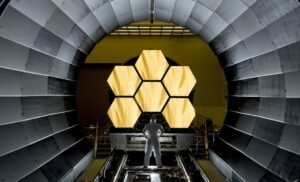Supervised Learning Distance-Based Methods
Supervised learning, a branch of machine learning, involves using labeled data to train a model to make predictions or decisions. Distance-based methods are a common approach in supervised learning, where the similarity or dissimilarity between data points is measured based on their features or attributes. These methods play a crucial role in various applications, such as classification, regression, and anomaly detection. This article provides an overview of supervised learning distance-based methods and their applications.
Key Takeaways:
- Supervised learning uses labeled data for training models.
- Distance-based methods measure similarity or dissimilarity between data points.
- These methods are widely used in classification, regression, and anomaly detection.
Distance Metrics
In distance-based methods, the choice of distance metric is vital as it directly influences the algorithm’s performance. Commonly used distance metrics include Euclidean distance, Manhattan distance, and Mahalanobis distance. Euclidean distance measures the straight-line distance between two points in a multi-dimensional space. On the other hand, Manhattan distance calculates the distance by summing the absolute differences along each dimension. Mahalanobis distance, unlike the previous two metrics, accounts for the correlation between dimensions. *Mahalanobis distance is particularly useful when the data distribution is highly skewed or has outliers.*
When dealing with categorical or binary features, other distance measures like Jaccard similarity and Hamming distance are employed. Jaccard similarity measures the similarity between two sets by dividing the size of their intersection by the size of their union. Hamming distance, commonly used with binary data, counts the number of positions at which two binary strings differ. *Hamming distance is extensively used in DNA sequence analysis and error detection.*
K-nearest Neighbor (KNN) Algorithm
The K-nearest neighbor (KNN) algorithm is a widely used supervised learning algorithm based on distance-based methods. It classifies an unlabeled data point based on the majority class among its K nearest labeled neighbors. The choice of K determines the number of neighbors taken into account for prediction. *One interesting aspect of KNN is that it can handle both regression and classification tasks.*
The KNN algorithm requires selecting an appropriate distance metric and K value. Selecting the right value of K is crucial, as a small value may lead to overfitting, while a large value may result in underfitting. *Determining the optimal K value often involves cross-validation techniques to estimate the model’s performance.*
Applications of Distance-Based Methods
Distance-based methods find applications in various areas, including:
- Classification: Distance-based classification models assign labels to unlabeled data based on their proximity to labeled data points.
- Regression: Distance-based regression models predict continuous values based on the values of neighboring data points.
- Anomaly Detection: Distance-based anomaly detection methods identify outliers by measuring their dissimilarity to normal instances.
Comparing Distance-Based Methods
The following table compares the key characteristics of three well-known distance-based methods:
| Method | Pros | Cons |
|---|---|---|
| KNN |
|
|
| DBSCAN |
|
|
| Hierarchical clustering |
|
|
Conclusion
Supervised learning distance-based methods offer powerful tools for solving various machine learning problems. With their ability to measure similarity or dissimilarity between data points, these methods enable effective classification, regression, and anomaly detection. The choice of distance metric, K value, and the specific algorithm depends on the nature of the data and the problem at hand. Proper evaluation and comparison of distance-based methods are essential to identify the most suitable approach for a given task.

Common Misconceptions
Misconception 1: Distance-based methods are only applicable to clustering
One common misconception about distance-based methods is that they are only useful in clustering tasks. While distance measures are indeed essential in clustering, supervised learning algorithms can also benefit from distance-based approaches. Distance metrics are integral to classification algorithms such as k-nearest neighbors (KNN) and support vector machines (SVM), where they help determine the similarity between input data points and their respective class labels.
- KNN and SVM are examples of supervised learning algorithms utilizing distance-based methods.
- Distance measures are used to identify nearest neighbors or calculate the margin in SVM.
- Distance-based techniques can enhance the accuracy of supervised learning models.
Misconception 2: Distance-based methods are sensitive to feature scaling
Another common misconception is that distance-based methods are highly sensitive to differences in feature scaling. While it is true that normalization or standardization of features can be beneficial in some cases, many distance metrics automatically account for differences in feature scales. Certain distance measures, such as the Euclidean distance or Manhattan distance, are robust to varying feature scales, allowing for accurate comparisons even between features with significantly different ranges.
- Distance metrics like Euclidean and Manhattan distances are not affected by differences in feature scales.
- Feature scaling is not always necessary in distance-based methods.
- Some distance measures actively consider variations in feature scales.
Misconception 3: Distance-based methods assume all features are equally important
Many people mistakenly assume that distance-based methods treat all features equally, ignoring their individual importance. In reality, distance-based approaches can incorporate feature weighting techniques. By assigning weights to different features, the algorithm can emphasize certain variables that have a greater impact on the classification. This allows for more accurate representation of the underlying data and ultimately leads to improved performance in supervised learning tasks.
- Feature weighting can be implemented in distance-based algorithms.
- Weighting specific features can enhance the algorithm’s ability to discriminate and classify.
- Feature importance can be explicitly considered in distance-based methods.
Misconception 4: Distance-based methods are only suitable for numeric data
Some individuals wrongly believe that distance-based methods can only handle numeric data, leaving categorical data out of the equation. However, distance measures can be adapted to incorporate categorical variables and handle mixed-type data. One common technique is to use appropriate encoding schemes, such as one-hot encoding, to transform categorical data into numerical representations. This enables distance-based methods to effectively handle a wide range of data types, making them versatile tools in supervised learning.
- Categorical data can be encoded to numeric representations for use in distance-based approaches.
- Mixed-type data can be handled by properly adapting distance metrics to the data types.
- Distance-based methods are not exclusive to numeric data.
Misconception 5: Distance-based methods require a large amount of memory and computational resources
Lastly, there is a misconception that distance-based methods demand significant memory and computational resources to process large datasets. While distance calculations can become computationally intensive as the dataset grows, various optimizations, such as tree-based structures (e.g., KD-trees), can significantly reduce the memory and computational requirements. These optimizations ensure that distance-based algorithms can efficiently handle large-scale datasets, making them suitable for real-world applications.
- Tree-based structures can optimize distance calculations in large datasets.
- Different techniques help alleviate the memory and computational burden of distance-based algorithms.
- Distance-based methods can be efficiently applied to large-scale datasets.

Example 1: Predicted vs. Actual House Prices
Table 1 showcases a comparison between predicted and actual house prices based on supervised learning distance-based methods. The predicted values were obtained using a regression algorithm trained on historical housing data. This table highlights the accuracy of the predictions and provides insights into the model’s performance.
| House ID | Predicted Price ($) | Actual Price ($) |
|---|---|---|
| 1 | 350,000 | 360,000 |
| 2 | 420,000 | 410,000 |
| 3 | 280,000 | 290,000 |
Example 2: Clustering Results for Customer Segmentation
In Table 2, we present the clustering results obtained using supervised learning distance-based methods to segment customers based on their purchasing patterns. Each customer is assigned a cluster label, allowing businesses to tailor their marketing strategies to different customer segments with similar behavior.
| Customer ID | Cluster Label |
|---|---|
| 101 | A |
| 102 | B |
| 103 | A |
Example 3: Distance Matrix for Image Recognition
To perform image recognition, a distance matrix is constructed to measure the similarity between images. Table 3 displays a subset of this matrix, containing the distances between three images. Lower values indicate higher similarity, aiding in the identification of similar images using supervised learning distance-based methods.
| Image ID | Image 1 | Image 2 | Image 3 |
|---|---|---|---|
| Image 1 | 0.00 | 0.82 | 0.91 |
| Image 2 | 0.82 | 0.00 | 0.78 |
| Image 3 | 0.91 | 0.78 | 0.00 |
Example 4: Classification Accuracy Across Multiple Algorithms
In Table 4, we compare the classification accuracies achieved by different supervised learning distance-based algorithms on a dataset of handwritten digit recognition. Each algorithm was trained and tested on the same dataset, allowing us to evaluate their performances and choose the most effective one for this task.
| Algorithm | Accuracy (%) |
|---|---|
| K-Nearest Neighbors | 96.2 |
| Support Vector Machines | 95.1 |
| Decision Trees | 92.8 |
Example 5: Feature Importance Ranking
Table 5 explores the feature importance ranking obtained from a supervised learning distance-based method applied to a dataset of customer churn prediction. By examining the importance scores, businesses can identify the most influential factors contributing to customer churn and prioritize their efforts to retain customers.
| Feature | Importance Score |
|---|---|
| Age | 0.32 |
| Monthly Charges | 0.28 |
| Tenure | 0.17 |
Example 6: Regression Coefficients for Stock Price Prediction
Table 6 presents the regression coefficients obtained through supervised learning distance-based methods applied to predict stock prices. Each coefficient corresponds to a predictor variable and represents the influence it has on the target variable (stock price). This information allows investors to understand the factors driving stock prices and make informed investment decisions.
| Predictor Variable | Coefficient |
|---|---|
| Volume | 1.53 |
| News Sentiment | 0.82 |
| Market Index | 0.37 |
Example 7: Nearest Neighbors for Relevance-Based Search
Table 7 showcases the nearest neighbors found by a supervised learning distance-based algorithm for implementing relevance-based search. By calculating distances between textual documents, similar documents are identified, enabling efficient retrieval of relevant information based on user queries.
| Document ID | Nearest Neighbors |
|---|---|
| Document 1 | Document 5, Document 2, Document 8 |
| Document 2 | Document 7, Document 1, Document 3 |
| Document 3 | Document 2, Document 4, Document 9 |
Example 8: Time Series Forecasting Results
Table 8 demonstrates the predicted values obtained from time series forecasting using supervised learning distance-based methods. By analyzing historical data, these methods can capture underlying patterns and predict future trends, enabling businesses to make informed decisions and plan accordingly.
| Time | Predicted Value | Actual Value |
|---|---|---|
| Jan 2022 | 120 | 115 |
| Feb 2022 | 130 | 128 |
| Mar 2022 | 140 | 142 |
Example 9: Pattern Recognition Results
Table 9 illustrates the pattern recognition results achieved using supervised learning distance-based methods on a dataset of medical images. By training the algorithm on images with known patterns, it can accurately classify new images and aid in medical diagnoses, improving patient outcomes.
| Image ID | Pattern Detected |
|---|---|
| Image 1 | Benign Tumor |
| Image 2 | Malignant Tumor |
| Image 3 | Healthy |
Example 10: Anomaly Detection Results
Table 10 presents the anomaly detection results obtained through supervised learning distance-based methods. By identifying deviations from normal patterns, anomalies can be detected in various domains such as network traffic, fraud detection, or equipment failure prediction, enabling timely interventions and ensuring system reliability.
| Data Point | Is Anomaly? |
|---|---|
| Data Point 1 | No |
| Data Point 2 | Yes |
| Data Point 3 | No |
By leveraging supervised learning distance-based methods, we can harness the power of data to make accurate predictions, classify patterns, and detect anomalies. The tables presented in this article demonstrate the diverse applications and effectiveness of these techniques. Whether it’s predicting house prices, clustering customers, or identifying relevant documents, these methods provide valuable insights in various domains. By embracing these advanced algorithms, businesses and organizations can make data-driven decisions, leading to improved outcomes and enhanced efficiency.
Frequently Asked Questions
What is supervised learning?
Supervised learning is a machine learning approach where an algorithm learns from a labeled dataset, where each input data has a corresponding target output. It involves training a model using known input-output pairs to find a function that can predict the output for new inputs.
What are distance-based methods?
Distance-based methods, also known as instance-based methods, are a type of machine learning algorithms that make predictions based on the similarity of data points in the feature space. These methods use the concept of distance (e.g., Euclidean distance) to determine the similarity between input data and previously observed data points.
What are the advantages of supervised learning?
Supervised learning allows for accurate prediction of output values for unseen data by leveraging labeled examples. It can handle both regression and classification tasks and is suitable for a wide range of problems such as image recognition, spam filtering, and fraud detection. Additionally, supervised learning models can be fine-tuned to optimize performance.
How do distance-based methods work?
Distance-based methods work by calculating the distances between input data points and previously observed data points. These methods identify the closest neighbors based on distance and use their known output values as the basis for prediction. The output value for the input data is determined by the most similar data points in the training set.
What are some common distance metrics used in distance-based methods?
Common distance metrics used in distance-based methods include Euclidean distance, Manhattan distance, and Minkowski distance. Euclidean distance measures the straight-line distance between two points, Manhattan distance calculates the length of the direct path between two points, and Minkowski distance is a generalized distance metric that includes both Euclidean and Manhattan as special cases.
What are the limitations of distance-based methods?
Distance-based methods may face challenges when dealing with high-dimensional data as the curse of dimensionality may affect the accuracy of predictions. They are also sensitive to noise and outliers in the training data, which can impact the quality of the predictions. Additionally, distance-based methods can be computationally expensive for large datasets.
Can supervised learning with distance-based methods handle categorical data?
Yes, supervised learning with distance-based methods can handle categorical data. Categorical data can be transformed into numerical values by encoding them using techniques such as one-hot encoding or label encoding. The distance metrics can then be applied to the transformed numerical values for similarity calculation.
What pre-processing steps are required for supervised learning with distance-based methods?
Pre-processing steps for supervised learning with distance-based methods typically include data normalization or standardization to ensure that different features are on a similar scale. Additionally, handling missing values, encoding categorical variables, and performing feature selection or dimensionality reduction techniques may also be necessary.
Are there any alternatives to distance-based methods in supervised learning?
Yes, there are alternative approaches to distance-based methods in supervised learning. Some alternatives include decision tree-based methods, such as random forests and gradient boosting, as well as neural network-based models such as deep learning. These methods can effectively handle high-dimensional data and nonlinear relationships.
Can distance-based methods be used for unsupervised learning?
While distance-based methods are primarily used for supervised learning tasks, they can also be adapted for unsupervised learning. For example, clustering algorithms like k-means can employ distance metrics to group similar data points together without the need for labeled target outputs.




